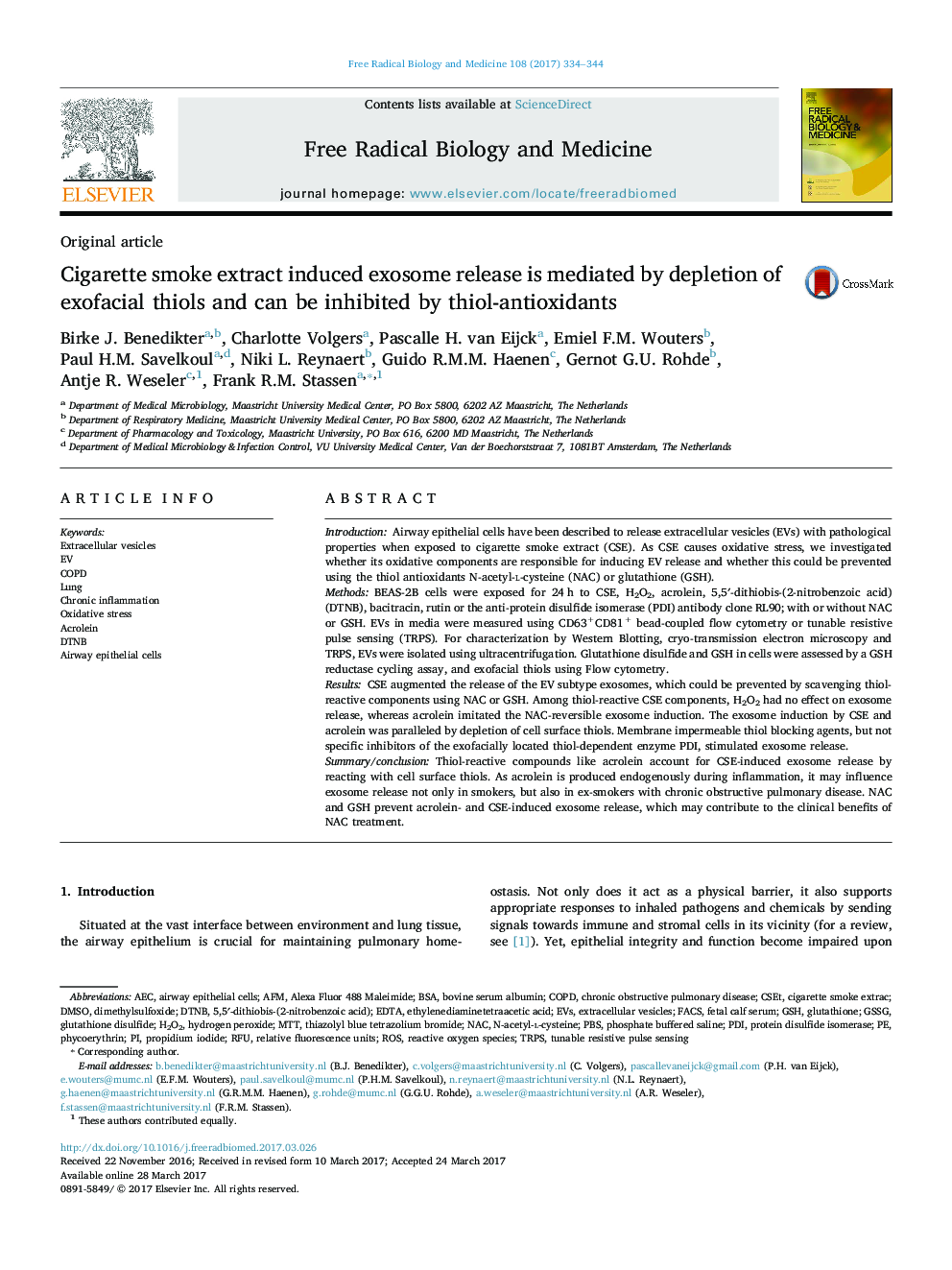| کد مقاله | کد نشریه | سال انتشار | مقاله انگلیسی | نسخه تمام متن |
|---|---|---|---|---|
| 5502045 | 1534935 | 2017 | 11 صفحه PDF | دانلود رایگان |
- Cigarette smoke extract (CSE) enhances exosome release by airway epithelial cells.
- This is mediated by thiol-reactive CSE components such as acrolein.
- CSE depletes cell surface thiols, which is sufficient to trigger exosome release.
- CSE-induced exosome release can be prevented by N-acetyl-l-cysteine and glutathione.
IntroductionAirway epithelial cells have been described to release extracellular vesicles (EVs) with pathological properties when exposed to cigarette smoke extract (CSE). As CSE causes oxidative stress, we investigated whether its oxidative components are responsible for inducing EV release and whether this could be prevented using the thiol antioxidants N-acetyl-l-cysteine (NAC) or glutathione (GSH).MethodsBEAS-2B cells were exposed for 24Â h to CSE, H2O2, acrolein, 5,5â²-dithiobis-(2-nitrobenzoic acid) (DTNB), bacitracin, rutin or the anti-protein disulfide isomerase (PDI) antibody clone RL90; with or without NAC or GSH. EVs in media were measured using CD63+CD81+ bead-coupled flow cytometry or tunable resistive pulse sensing (TRPS). For characterization by Western Blotting, cryo-transmission electron microscopy and TRPS, EVs were isolated using ultracentrifugation. Glutathione disulfide and GSH in cells were assessed by a GSH reductase cycling assay, and exofacial thiols using Flow cytometry.ResultsCSE augmented the release of the EV subtype exosomes, which could be prevented by scavenging thiol-reactive components using NAC or GSH. Among thiol-reactive CSE components, H2O2 had no effect on exosome release, whereas acrolein imitated the NAC-reversible exosome induction. The exosome induction by CSE and acrolein was paralleled by depletion of cell surface thiols. Membrane impermeable thiol blocking agents, but not specific inhibitors of the exofacially located thiol-dependent enzyme PDI, stimulated exosome release.Summary/conclusionThiol-reactive compounds like acrolein account for CSE-induced exosome release by reacting with cell surface thiols. As acrolein is produced endogenously during inflammation, it may influence exosome release not only in smokers, but also in ex-smokers with chronic obstructive pulmonary disease. NAC and GSH prevent acrolein- and CSE-induced exosome release, which may contribute to the clinical benefits of NAC treatment.
210
Journal: Free Radical Biology and Medicine - Volume 108, July 2017, Pages 334-344
